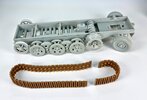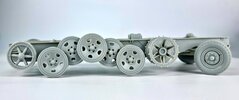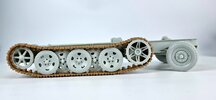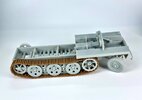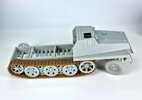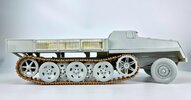Panzerwrecker
SMF Supporter
This is the 2016 ‘2in1’ Bronco kit #CB35214. It was the last release of a series of SWS variants, that were based on the original Great Wall Hobby mouldings stretching back to 2009.
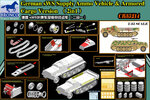
The detail is sharp, and the armoured cab thickness is nicely rendered to scale. Although there is a small degree of mould offset on a few parts there is no flash and very few pin marks present. It is also nice to see well thought out sprue gate connections, making removal of the access easier to accomplish cleanly.
The all-plastic sandwich design of the front wheels is most welcome as is the addition of plastic options to replace some photoetch parts. Unlike the GWH kits Bronco have included a comprehensively designed engine and although nothing will be seen if the engine hatches remain closed it is a nice feature that many modellers will utilise. The tracks are of the individual link type and although not workable they look to be of good quality. The Bronco kits also added a host of accessories that include Jerry cans and fuel drums.
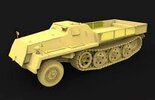
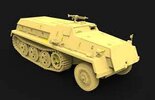
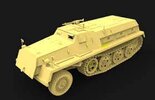
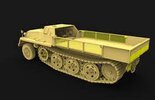
Before we start the build lets have a look at some vehicle history and kit accuracy.
The Schwerer Wehrmachtschlepper (SWS; "Heavy Military Tractor") was a German World War II half-track vehicle used in various roles between 1943 and 1945. The unarmoured models were used as supply vehicles and as tractors to haul artillery. Armoured versions mounted anti-aircraft guns or a 10-barrel rocket launcher (Nebelwerfer). Fewer than a thousand were built before the end of the war, but production continued after the war of an improved model in the Tatra plant in Czechoslovakia.
Most of the GWH/Bronco variants released were actual produced vehicles, but no photographic evidence exists that either the armoured searchlight (UHU) or the armoured supply ammo (Nebelwerfer) version was ever built. Also, although images do exist of the 2cm Flakvierling 38 fitted, it was never acknowledged as an official production type. By the time the SWS was in production the 3.7cm Flak 43 was considered the more appropriate weapon.
This kit gives you options to build a supply ammo or armoured cargo version. I decided to build the produced armoured cargo version and used the Nuts & Bolts 41: Bussings schwerer Wehrmachtschlepper (sWS) and Variants as a reference guide. The book has a nice feature clearly showing all the design changes from prototype to production series by way of colour coding CAD scale images.
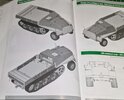
Whilst there are many photographs of this vehicle it appears GWH used a prototype to base their original mouldings on. Although Bronco improved on many of the versions they later released, they did not address any of the updates seen on production vehicles.
Prototype
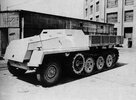
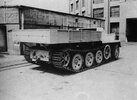
Most obvious visual updates to the production vehicle include the front ‘bumper bar’ the side vision ports; the wooden platform supports, the road wheel design, the rear chassis panel components and the fuel filler cap.
The early bumper bars tapered in at the ends whilst the production series vehicles had simplified straight bars.
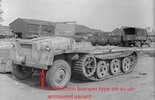
The side vision ports on the kit are identical when in fact the drivers port was enlarged on the production vehicle. Compare the Flak 43 variant pic below with the prototype one above.
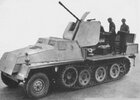
The wooden platform supports appear to have changed although photographic evidence in this area is thin on the ground. The prototype version had the platform sitting higher than the production series but how the wooden support structure changed in shape is unclear. Clear images of the prototype vehicle support show clear daylight between them yet all the images of the production vehicles I can make out appear to show a solid horizontal beam from front to back. That could just be a trick of the light so it’s difficult to tell! The supports in the kit, although of the prototype design do sit at the lower height of the production series.
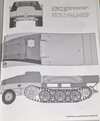
Compare the platform on the production vehicle image below with the prototype one on the CAD image above
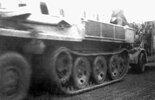
The prototype wheels had a series of holes around the edge. GWH supply the production version without the holes in the kit.
The chassis rear panel in the kit is off the prototype. The production series had the step relocated to the offside. Only one in four production SWS’s ever received a winch so if not fitted the holes in the rear panel remained.
Production rear chassis panel on an un-armoured variant
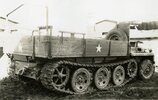
The prototype fuel filler cap was simply screwed into the top of the tank and was obviously difficult to fill under the platform bed, so an extended ‘s’ shaped funnel extending rearward can be seen on production vehicles. (see above the step on the pic above) A tool box was also fitted next to it on many of the production vehicles.
Very few photographs exist of the interior on the armoured versions, so areas of the cab mouldings are still up for discussion. This kit does provide a split bulkhead behind the driver on the sprue trees but for some strange reason does not call it out for either of the versions in this kit. There are two issues in the kit in this area. Firstly, Great Wall Hobby research mistook the rifle racks (red arrows below) that sit on the interior walls for seats! The kit provides two folding seats for each side when in fact the split bulkhead had two slots (see dark areas behind the racks) and a rifle rack fitted which allowed the rifles to fit through the bulkhead, along the walls. Secondly the rear of the cab roof was cut short on production vehicles and a tarpaulin used to weatherproof the rear of the cab. This appears to be fitted behind the splash guard which is not present on the prototype roof.
The image below from the N & B 41 book clearly shows the bulkhead in place, with the cut-outs for the rifle racks and the tarpaulin fitted to a production Flak version without the gun and carriage fitted.
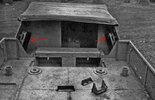
A Cad image of a prototype vehicle. Notice the rifle racks through the bulkhead cut outs.
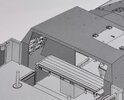
You can just make out in the image of a production Flak variant below that the roof has been cut short behind the splash guard. Interestingly the kit roof moulding does have slots to the underside of the roof. Is this so you can cut out this section on the Flak versions of the kit? It also has witness marks down the interior walls, for the bulkhead to be fitted but the instructions have you remove them!
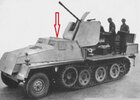
Armoured cab instrument panel
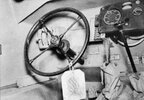
So, what to do about the kit’s accuracy issues?
I decided to leave my prototype shaped bumpers alone. I will trim down the passenger vision port. It won’t be quite as small as the real thing but hopefully enough to show a difference. The fuel filler neck extension can be made from heating a section of sprue and bending it into shape. The platform support update would be guesswork so the prototype design would remain on my vehicle. As for the cab, I will add the split bulkhead and add the cut outs. As the offside wall inside the bulkhead is populated with all manner of electrical gubbins I will add the welding witness marks on that side and just add a rifle rack on the driver’s side. As for the roof, there is no need to cut out the rear section. I will scratch my own tarpaulin which will effectively cover the roof area anyway
Attachments
Last edited:

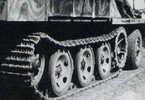
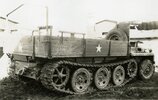
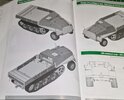

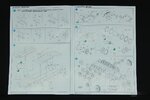
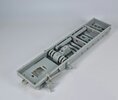
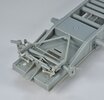
 If you do want to represent leaf spring articulation as I did, simply cut the pip off part B19. This allows some movement but I also pinned it and elongated the hole it sat in for maximum articulation. Parts B8 & 9 can then be glued in place. As mentioned, the front wheel axle stubs are designed to be steerable, but the ends of each axle half (parts B65, B66) do need to be hollowed out a fair bit with a round file for the axle stubs (parts A13) to fit without forcing the two halves apart.
If you do want to represent leaf spring articulation as I did, simply cut the pip off part B19. This allows some movement but I also pinned it and elongated the hole it sat in for maximum articulation. Parts B8 & 9 can then be glued in place. As mentioned, the front wheel axle stubs are designed to be steerable, but the ends of each axle half (parts B65, B66) do need to be hollowed out a fair bit with a round file for the axle stubs (parts A13) to fit without forcing the two halves apart.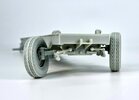
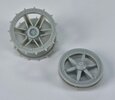

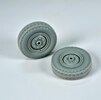
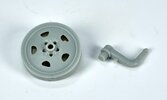
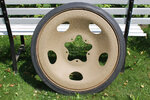
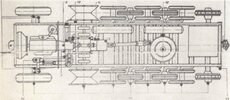
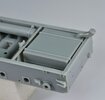
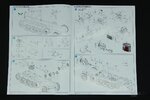
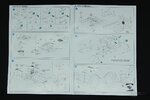
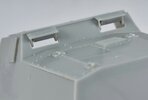

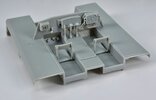
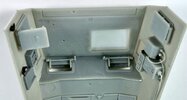
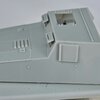
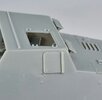
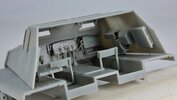
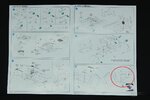
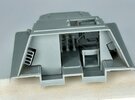

 Not a vehicle I particularly care for, but the model is looking good so far. That mistaking of the rifle racks for seats appears to be common, though — doesn’t a Trumpeter Sd.Kfz. 7/1 or /2 have the same problem?
Not a vehicle I particularly care for, but the model is looking good so far. That mistaking of the rifle racks for seats appears to be common, though — doesn’t a Trumpeter Sd.Kfz. 7/1 or /2 have the same problem?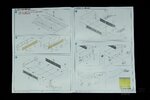
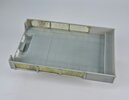
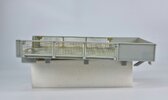
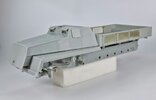
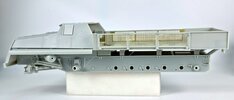
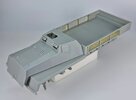

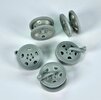

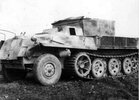
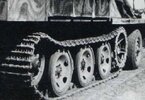
 That is obviously always going to be dictated by the top run tension achieved.
That is obviously always going to be dictated by the top run tension achieved.